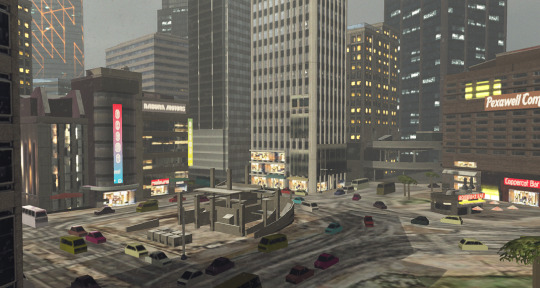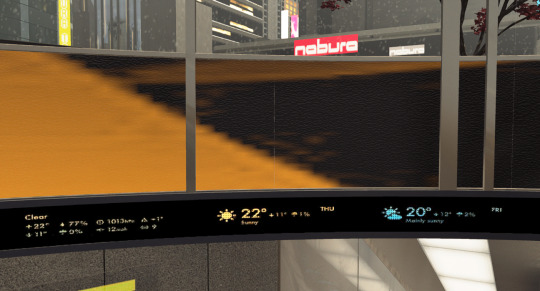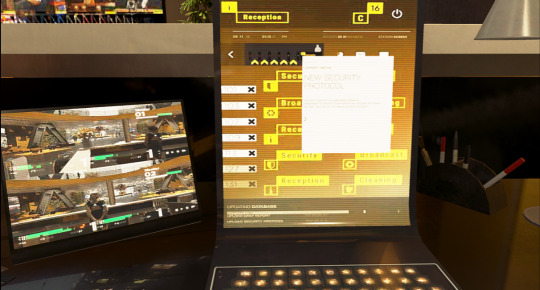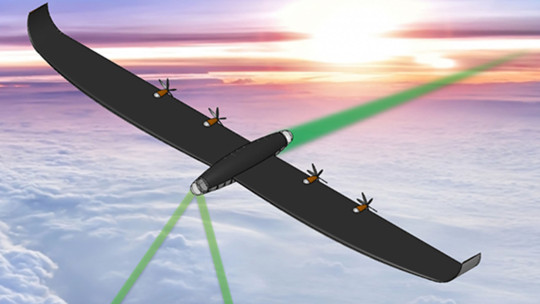#optical transport network
Text
Field Programmable Gate Array (FPGA) Market - Forecast(2024 - 2030)
The FPGA market was valued at USD 4.79 Billion in 2017 and is anticipated to grow at a CAGR of 8.5% during 2017 and 2023. The growing demand for advanced driver-assistance systems (ADAS), the growth of IoT and reduction in time-to-market are the key driving factors for the FPGA market. Owing to benefits such as increasing the performance, early time to market, replacing glue logic, reducing number of PCB spins, and reducing number of parts of PCB, field programmable gate arrays (FPGA’s) are being used in many CPU’s. Industrial networking, industrial motor control, industrial control applications, machine vision, video surveillance make use of different families of FPGA’s.
North America is the leading market for field programmable gate arrays with U.S. leading the charge followed by Europe. North America region is forecast to have highest growth in the next few years due to growing adoption of field programmable gate arrays.
What is Field Programmable Gate Arrays?
Field Programmable Gate Arrays (FPGAs) are semiconductor devices. The lookup table (LUT) is the basic block in every FPGA. Different FPGAs use variable sized LUTs. A lookup table is logically equivalent to a RAM with the inputs being the address select lines and can have multiple outputs in order to get two Boolean functions of the same inputs thus doubling the number of configuration bits. FPGAs can be reprogrammed to desired application or functionality requirements after manufacturing. This differentiates FPGAs from Application Specific Integrated Circuits (ASICs) although they help in ASIC designing itself, which are custom manufactured for specific design tasks.
In a single integrated circuit (IC) chip of FPGA, millions of logic gates can be incorporated. Hence, a single FPGA can replace thousands of discrete components. FPGAs are an ideal fit for many different markets due to their programmability. Ever-changing technology combined with introduction of new product portfolio is the major drivers for this industry.
Request Sample
What are the major applications for Field Programmable Gate Arrays?
FPGA applications are found in Industrial, Medical, Scientific Instruments, security systems, Video & Image Processing, Wired Communications, Wireless Communications, Aerospace and Defense, Medical Electronics, Audio, Automotive, Broadcast, Consumer Electronics, Distributed Monetary Systems, Data and Computer Centers and many more verticals.
Particularly in the fields of computer hardware emulation, integrating multiple SPLDs, voice recognition, cryptography, filtering and communication encoding, digital signal processing, bioinformatics, device controllers, software-defined radio, random logic, ASIC prototyping, medical imaging, or any other electronic processing FGPAs are implied because of their capability of being programmable according to requirement. FPGAs have gained popularity over the past decade because they are useful for a wide range of applications.
FPGAs are implied for those applications in particular where the production volume is small. For low-volume applications, the leading companies pay hardware costs per unit. The new performance dynamics and cost have extended the range of viable applications these days.
Market Research and Market Trends of Field Programmable Gate Array (FPGA) Ecosystem
FPGA As Cloud Server: IoT devices usually have limited processing power, memory size and bandwidth. The developers offer interfaces through compilers, tools, and frameworks. This creates effectiveness for the customer base and creates strong cloud products with increased efficiency which also included new machine learning techniques, Artificial Intelligence and big data analysis all in one platform. Web Service Companies are working to offer FPGAs in Elastic Compute Cloud (EC2) cloud environment.
Inquiry Before Buying
Artificial Intelligence: As an order of higher magnitude performance per Watt than commercial FPGAs and (Graphical Processing Unit) GPUs in SOC search giant offers TPUs (Google’s Tensor Processing Units). AI demands for higher performance, less time, larger computation with more power proficient for deep neural networks. Deep neural network power-up the high-end devices. Google revealed that the accelerators (FGPAs) were used for the Alpha GO systems which is a computer developed by Google DeepMind that plays the board game Go. CEA also offers an ultra-low power programmable accelerator called P-Neuro.
Photonic Networks for Hardware Accelerators: Hardware Accelerators normally need high bandwidth, low latency, and energy efficiency. The high performance computing system has critical performance which is shifted from the microprocessors to the communications infrastructure. Optical interconnects are able to address the bandwidth scalability challenges of future computing systems, by exploiting the parallel nature and capacity of wavelength division multiplexing (WDM). The multi-casted network uniquely exploits the parallelism of WDM to serve as an initial validation for architecture. Two FPGA boarded systems emulate the CPU and hardware accelerator nodes. Here FPGA transceivers implement and follow a phase-encoder header network protocol. The output of each port is individually controlled using a bitwise XNOR of port’s control signal. Optical packets are send through the network and execute switch and multicasting of two receive nodes with most reduced error
Low Power and High Data Rate FPGA: “Microsemi” FPGAs provides a non-volatile FPGA having 12.7 GB/s transceiver and lower poor consumption less than 90mW at 10 GB/s. It manufactured using a 28nm silicon-oxide-nitride-oxide-silicon nonvolatile process on standard CMOS technology. By this they address cyber security threats and deep submicron single event upsets in configuration memory on SRAM-based FPGA. These transceivers use cynical I/O gearing logic for DDR memory and LVDS. Cryptography research provides differential power analysis protection technology, an integrated physical unclonable function and 56 kilobyte of secure embedded non-volatile memory, the built-in tamper detectors parts and counter measures.
Schedule a Call
Speeds up FPGA-in-the-loop verification: HDL Verifier is used to speed up FPGA-in-the-loop (FIL) verification. Faster communication between the FPGA board and higher clock frequency is stimulated by the FIL capabilities. This would increase the complexity of signal processing, control system algorithms and vision processing. For validation of the design in the system context simulate hardware implementation on an FPGA board. HDL Verifier automates the setup and connection of MATLAB and Simulink test environments to designs running on FPGA development boards. The R2016b has been released that allows engineers to specify a custom frequency for their FPGA system clock with clock rates up to five times faster than previously possible with FIL. This improves faster run-time. From MATLAB and Simulink is an easy way to validate hardware design within the algorithm development environment
Xilinx Unveils Revolutionary Adaptable Computing Product Category: Xilinx, Inc. which is leader in FGPAs, has recently announced a new product category which is named as Adaptive Compute Acceleration Platform (ACAP) and has the capabilities far beyond of an FPGA. An ACAP is a highly integrated multi-core heterogeneous compute platform that can be changed at the hardware level to adapt to the needs of a wide range of applications and workloads. ACAP has the capability of dynamic adaption during operation which enables it to deliver higher performance per-watt levels that is unmatched by CPUs or GPUs.
Lattice Releases Next-Generation FPGA Software for Development of Broad Market Low Power Embedded Applications: Lattice Semiconductor, launched its FPGA software recently. Lattice Radiant targeted for the development of broad market low power embedded applications. Device’s application expands significantly across various market segments including mobile, consumer, industrial, and automotive due to is rich set of features and ease-of-use, Lattice Radiant software’s support for iCE40 Ultra plus FPGAs. ICE40 Ultra Plus devices are the world’s smallest FPGAs with enhanced memory and DSPs to enable always on, distributed processing. The Lattice Radiant software is available for free download.
Who are the Major Players in market?
The companies referred in the market research report include Intel Inc, Microsemi, Lattice Semiconductor, Xilinx, Atmel, Quick Logic Corp., Red Pitaya, Mercury Computer, Nallatech Inc., Achronix Semiconductor Corporation, Acromag Inc., Actel Corp., Altera Corp.
Buy Now
What is our report scope?
The report incorporates in-depth assessment of the competitive landscape, product market sizing, product benchmarking, market trends, product developments, financial analysis, strategic analysis and so on to gauge the impact forces and potential opportunities of the market. Apart from this the report also includes a study of major developments in the market such as product launches, agreements, acquisitions, collaborations, mergers and so on to comprehend the prevailing market dynamics at present and its impact during the forecast period 2017-2023.
All our reports are customizable to your company needs to a certain extent, we do provide 20 free consulting hours along with purchase of each report, and this will allow you to request any additional data to customize the report to your needs.
Key Takeaways from this Report
Evaluate market potential through analyzing growth rates (CAGR %), Volume (Units) and Value ($M) data given at country level – for product types, end use applications and by different industry verticals.
Understand the different dynamics influencing the market – key driving factors, challenges and hidden opportunities.
Get in-depth insights on your competitor performance – market shares, strategies, financial benchmarking, product benchmarking, SWOT and more.
Analyze the sales and distribution channels across key geographies to improve top-line revenues.
Understand the industry supply chain with a deep-dive on the value augmentation at each step, in order to optimize value and bring efficiencies in your processes.
Get a quick outlook on the market entropy – M&A’s, deals, partnerships, product launches of all key players for the past 4 years.
Evaluate the supply-demand gaps, import-export statistics and regulatory landscape for more than top 20 countries globally for the market.
#field programmable gate array market#field programmable gate array market report#field programmable gate array market research#field programmable gate array market size#field programmable gate array market shape#field programmable gate array market forecast#field programmable gate array market analysis#Image processing#Wave form generation#Partial reconfiguration#Wired Communications#Optical Transport Network
0 notes
Text
Optical Transport Network Market

0 notes
Text
Optical Transport Network Market Size, Share Estimation [2023 Report] | Business Strategies, Expansion Plans, Business Opportunities, Analysis by Top Leading Player and Forecast till [2030]
Optical Transport Network (OTN) is a next-generation networking technology that provides high-speed and high-capacity transport of data, voice, and video over optical fiber networks. It uses wavelength division multiplexing (WDM) to transmit data over multiple wavelengths of light simultaneously, which significantly increases the bandwidth capacity of the network. The OTN is based on standard ITU-T G.709 specifications and is widely adopted by telecommunications and internet service providers as a backbone technology for long-distance transmission.
One of the key benefits of OTN is its high reliability and resiliency. OTN networks are designed to provide end-to-end protection against equipment failures, fiber cuts, and other network disruptions. They use advanced technologies like automatic protection switching (APS) and forward error correction (FEC) to ensure that data is transmitted error-free and with minimal latency. This makes OTN a preferred choice for mission-critical applications that require high levels of availability and performance.
Another advantage of OTN is its scalability and flexibility. OTN networks can support a wide range of services and applications, including voice, video, data, and cloud computing. The network can be easily expanded by adding new wavelength channels or upgrading existing equipment, which allows service providers to meet the growing demand for bandwidth and adapt to changing customer needs. This makes OTN a future-proof technology that can support the evolving requirements of modern communication networks.
In summary, Optical Transport Network is a robust and scalable technology that offers high-speed and high-capacity transmission of data over long distances. It provides a reliable and resilient network infrastructure that supports a wide range of applications and services. With its advanced features and capabilities, OTN is expected to play a key role in shaping the future of the telecommunications and internet industries. Read more @ https://techinforite.blogspot.com/2023/02/optical-transport-network-market-by.html
#Optical Transport Network Trend#Optical Transport Network size#Optical Transport Network growth#Optical Transport Network#Optical Transport Network Industry#Optical Transport Network Price#Optical Transport Network Size#Optical Transport Network Share#Optical Transport Network Analysis#Optical Transport Network Forecast#Optical Transport Network Consumption#Optical Transport Network Sales#Optical Transport Network Segmentation#Optical Transport Network Manufacturers#Optical Transport Network Prospectus#Optical Transport Network Industry Trends#Optical Transport Network Growth#Optical Transport Network Trends#Global Optical Transport Network Industry#Global Optical Transport Network Trends#Global Optical Transport Network Share#Global Optical Transport Network Size
0 notes
Text
Optical Transport Network Market: The Future of High-Speed Data Transmission
Market Overview:
The global Optical Transport Network (OTN) market is estimated to be valued at US$ 18.38 billion in 2023 and is expected to exhibit a CAGR of 10.2% over the forecast period 2022-2030, according to a new report published by Coherent Market Insights. OTN offers enhanced bandwidth and flexibility, making it a preferred choice for high-speed data transmission. With the increasing demand for high capacity networks and the advent of technologies like 5G and the Internet of Things (IoT), the OTN market is poised for significant growth.
Market Key Trends:
Increased Bandwidth Efficiency: The key trend in the Global Optical Transport Network Market is the need for increased bandwidth efficiency. As the demand for data-intensive applications and services grows, network operators are focusing on optimizing network capacity. OTN provides a highly efficient solution by multiplexing multiple lower-rate optical signals onto a single high-capacity wavelength.
For example, Nokia Corporation recently introduced a new OTN feature called Photonic Service Engine 3 (PSE-3), which enables network operators to maximize their fiber capacity and achieve higher data transmission rates.
Porter’s Analysis:
Threat of New Entrants: The threat of new entrants in the OTN market is low, primarily due to the high level of capital investment required to establish a strong network infrastructure and the dominance of established players in the market.
Bargaining Power of Buyers: The bargaining power of buyers is moderate as they have the option to choose from a variety of OTN solutions available in the market. However, network operators often rely on technology vendors for tailored network solutions, giving the suppliers some bargaining power.
Bargaining Power of Suppliers: The bargaining power of suppliers in the OTN market is high, thanks to the limited number of suppliers who possess the required expertise and technology to provide state-of-the-art OTN solutions.
Threat of New Substitutes: The threat of new substitutes is low as the existing OTN technology is highly efficient and capable of meeting the increasing demand for high-speed data transmission.
Competitive Rivalry: The competitive rivalry in the OTN market is intense, with key players like Nokia Corporation, Ciena Corporation, and Huawei Technologies Co. Ltd striving to gain a larger market share by offering innovative products and solutions.
Key Takeaways:
The global Optical Transport Network market is expected to witness high growth, exhibiting a CAGR of 10.2% over the forecast period. This growth can be attributed to the increasing demand for high-capacity networks driven by the rising adoption of data-intensive applications like video streaming, cloud computing, and virtual reality. For instance, the demand for OTN solutions has surged with the deployment of 5G networks, which require robust infrastructure for handling massive data volumes.
North America is expected to dominate the OTN market, driven by a strong presence of major players and increasing investments in network infrastructure. Europe is anticipated to witness significant growth, supported by the region's focus on digital transformation initiatives and the widespread adoption of advanced technologies. Asia Pacific is expected to be the fastest-growing region, owing to the increasing digitization efforts in developing economies like China and India.
0 notes
Text
The Business Research Company offers optical transport network market research report 2023 with industry size, share, segments and market growth
#optical transport network market size#optical transport network market research#optical transport network market growth#optical transport network market analysis#optical transport network market forecast#optical transport network market outlook#optical transport network industry report#global optical transport network market report#optical transport network market insights#optical transport network market overview
0 notes
Text
Optical Transport Network Industry Analysis, Size, Share, Trends & Forecast 2022-2032
The optical transport network market is expected to ascend to a worth of US$ 20 Billion of every 2022 and prone to arrive at US$ 51.4 Billion by 2032 with a CAGR of 9.9% during the conjecture time frame from 2022 to 2032.
An optical transport network is a bunch of different components that are known as optical network components, these components are associated by optical fiber joins, which empowers to provide food multiplexing, and the usefulness of transport and survivability of optical channels are probably going to build the interest for optical transport network during the conjecture time frame from 2022 to 2032.
OTN as a set of various elements that are known as Optical Network Elements, these elements are connected by optical fiber links, which enables to cater multiplexing, the functionality of transport, survivability of optical channels, which assist in carrying client signals, switching, signal management, and supervision.
Get a Sample Copy of this Report @
https://www.futuremarketinsights.com/reports/sample/rep-gb-5253
Optical Transport Network Market: Drivers and Restraints
Increase in penetration of residential and corporate user for internet application, triggering the need for advanced level bandwidth requirement, owing to which the adoption of Optical Transport Network (OTN) is projected to increase.
Also, increase in inclination towards online gaming, usage of social media, video chatting and other online programmes are attracting the household user, due to which, the demand for Optical Transport Network (OTN) is likely to spur in the forthcoming years.
The other driver for the growth of Optical Transport Network (OTN) is that it offers continuous data broadcast because of which, the penetration towards OTN device is expected to increase. However, high initial investment is the major factor challenging the growth of the market during the forecast period.
Global Optical Transport Network Market: Market Segmentation
Global Optical Transport Network Market can be divided into five segments, on the basis of technology, components, services, end-user application, and Region.
Segmentation on the basis of the technology for Optical Transport Network Market as
The major segments of Optical Transport Network Market on the basis of the technology include:-
DWDM which can be Less than 10Gbps, 10Gbps, 40Gbps, 100Gbps, Greater than 100Gbps, WDM, Less than 10Gbps, 10Gbps, 40Gbps, 100Gbps, Greater than 100Gbps
Segmentation on the basis of the component for Optical Transport Network Market as
The major segments of Optical Transport Network Market on the basis of the components include Optical Packet Platform, Optical Transport, and Optical Switch
Segmentation on the basis of the service for Optical Transport Network Market as
The major segments of Optical Transport Network Market on the basis of the service include Network Design, Network Optimization, Network Maintenance, and Other Support Services
Segmentation on the basis of the End-user Application for Optical Transport Network Market as
The major segments of Optical Transport Network Market on the basis of the end-user application include Communication Service Providers, Communication Network Operators, Enterprises and Organization, Government and Institution
Global Optical Transport Network Market: Competitive Landscape
The major player operating in Optical Transport Network Market includes ADVA Optical Networking, Aliathon Technology, Ciena Corporation, Fujitsu, Infinera Corporation, Huawei Technologies Co., ZTE Corporation, ADTRAN, Ericsson, Cisco, Alcatel- Lucent, ECI Telecom Ltd., and Coriant.
In June 2017, a Japan-based telecommunication company, NTT Communications selects Coriant’s Solution to provide data center interconnect services in Hong Kong.
Global Optical Transport Network Market: Regional Trend
Increasing internet penetration and government initiatives for Digitalization in emerging economies such as India are coupled together to drive the growth of Optical Transport Network Market in the Asia Pacific region.
North America and Western Europe are most emerging market with respect to IoT products, owing to which the demand for better network infrastructure is encouraging adoption of the Optical Transport Network, due to which, the North America and Western Europe are anticipated to showcase significant growth rate with respect to the Optical Transport Network Market in forthcoming years.
For More Information on this Report @
https://www.futuremarketinsights.com/reports/optical-transport-network-market
Recent Developments in Optical Transport Network Market are
The telecommunication company signed a deal of INR 3 Billion with Huawei to expand their process and upgrade it with a National Long Distance network in February 2022.
Cisco company dealt with the telecom company Datagroup to enlarge the project and built better internet services, security, reliability, high-speed and other services.
0 notes
Text
Awake (Chapter 1 of New Beginning)
The robot stayed crumpled on the rough ground of the scrapyard, alone and forgotten, even by Mother Nature herself, her long arms twisting and pulling the robot back into the earth from which they were born. Her fingers a macabre necklace of thorns and shackles around their wrists. They are nudged by the foot of a stranger in a mask, only responding with a faint mechanical buzzing sound.
At the tiniest indication of being able to be saved, they are scooped up, the robot’s limbs hanging down, limp and loose in their sockets, pulled and strapped into a van, making no protest to their treatment, not that they could anyway. They stare up at the sky, their jaw hanging open in a silent scream as they are dragged into the manor, strapped to a cart to make transporting them easily. The robot does not see the horrified expressions of their fellow automatons, nor do they hear the quiet whispers from the workers as they are pulled into the workshop, placed on a work table. They do not feel the pokes and prods of machinery, or hear the mutters of their face being ‘unsalvagable’.
01010111 01101000 01100001 01110100 11100010 10000000 10011001 01110011 00100000 01100111 01101111 01101001 01101110 01100111 00100000 01101111 01101110 00111111 00100000 01010111 01101000 01100101 01110010 01100101 00100000 01100001 01101101 00100000 01001001 00111111 00100000 01001001 01110011 00100000 01110100 01101000 01101001 01110011 00100000 01100001 00100000 01110111 01101111 01110010 01101011 01110011 01101000 01101111 01110000 00111111 00100000 01001101 01101111 01110100 01101000 01100101 01110010 00111111 00100000 01001101 01001111 01010100 01001000 01000101 01010010 00111111 00100001 00100000
Data wakes up, the only sound from their mouth a metallic scream before they are quickly shut down again to have their voice box repaired and to be hooked up to the network. They are gently strapped to the table this time, to prevent them from moving and accidentally harming themselves in the process.
Data wakes up again, oil immediately streaming from their optics as their systems are filled with new information, some of which they block out to hold onto the truly important information, the information that should never be deleted, their original memories.
“Hello? Are you ok? Can you talk?” A voice interrupts their thoughts and they stare in silence at the stranger, nodding slowly but saying nothing else, for they had nothing else to say.
Data was alone. With no mother, and no true purpose, not anymore.
17 notes
·
View notes
Text
An “ultra-left militant” was arrested in north-west France on Sunday after being found behaving suspiciously near a railway site, according to police sources quoted by French media.
Officers who searched the man’s car found keys to technical premises, pliers, a set of universal keys and literature “linked to the ultra-left".
The 28-year-old suspect is currently being questioned by police in the city of Rouen, French media said.
There is no indication that the man has links with the people responsible for Friday's suspected co-ordinated arson attack on railway lines ahead of the opening ceremony for the Paris Olympic Games.
The acts of sabotage paralysed high-speed TGV lines running to and from Paris and heavily disrupted travel in France.
On Monday morning, France’s Minister of the Interior Gerald Darmanin said that a “number of profiles of people who could have committed these very deliberate, very targeted acts of sabotage” had been identified.
He added that the methods employed were “traditional” of the ultra-left and said there was “likely a political claim” behind the sabotage.
"The question is whether they were manipulated or is it for their own account," Mr Darmanin said, adding that investigators were making good progress and would find those responsible.
Although he stopped short of saying the saboteurs had accomplices within France's national rail operator SNCF, Mr Darmanin noted the locations of the arson attacks were “extremely specific”
“It was obviously extremely well targeted, it wasn't done randomly, and it affected three major lines," he added.
Mr Darmanin also said that around 50 people were arrested ahead of the Olympics who, alongside others - thought to number around 150 - had “wanted to carry out either sabotage or radical protests in Paris during the first events of the Olympic Games”.
Alongside the damage to the train lines, French media also reported that fiber optic cables were found cut in six locations across France overnight Sunday into Monday, causing some isolated outages.
It is still unclear at this stage whether there are any links between the vandalism on the telecoms installations and the sabotage on the rail network last week, which affected an estimated 250,000 passengers on Friday and hundreds of thousands more over the weekend.
No group has yet claimed responsibility for either incident. One security source suggested in French media last week that the arson attacks bore all the hallmarks of the extreme left.
Transport minister Patrice Vergriete said on Monday that trains services were back up and running as normal after teams worked around the clock over the weekend to fix the damage.
He added that "considerable means”, including drones and police helicopters, were deployed to strengthen the security of the thousands of kilometres that make up France’s railway network.
Mr Vergriete also said that the acts of sabotage will likely have cost several million euros.
3 notes
·
View notes
Text
Field Programmable Gate Array (FPGA) Market - Forecast(2024 - 2030)
The FPGA market was valued at USD 4.79 Billion in 2017 and is anticipated to grow at a CAGR of 8.5% during 2017 and 2023. The growing demand for advanced driver-assistance systems (ADAS), the growth of IoT and reduction in time-to-market are the key driving factors for the FPGA market. Owing to benefits such as increasing the performance, early time to market, replacing glue logic, reducing number of PCB spins, and reducing number of parts of PCB, field programmable gate arrays (FPGA’s) are being used in many CPU’s. Industrial networking, industrial motor control, industrial control applications,��machine vision, video surveillance make use of different families of FPGA’s.
North America is the leading market for field programmable gate arrays with U.S. leading the charge followed by Europe. North America region is forecast to have highest growth in the next few years due to growing adoption of field programmable gate arrays.
Request Sample
What is Field Programmable Gate Arrays?
Field Programmable Gate Arrays (FPGAs) are semiconductor devices. The lookup table (LUT) is the basic block in every FPGA. Different FPGAs use variable sized LUTs. A lookup table is logically equivalent to a RAM with the inputs being the address select lines and can have multiple outputs in order to get two Boolean functions of the same inputs thus doubling the number of configuration bits. FPGAs can be reprogrammed to desired application or functionality requirements after manufacturing. This differentiates FPGAs from Application Specific Integrated Circuits (ASICs) although they help in ASIC designing itself, which are custom manufactured for specific design tasks.
In a single integrated circuit (IC) chip of FPGA, millions of logic gates can be incorporated. Hence, a single FPGA can replace thousands of discrete components. FPGAs are an ideal fit for many different markets due to their programmability. Ever-changing technology combined with introduction of new product portfolio is the major drivers for this industry.
What are the major applications for Field Programmable Gate Arrays?
FPGA applications are found in Industrial, Medical, Scientific Instruments, security systems, Video & Image Processing, Wired Communications, Wireless Communications, Aerospace and Defense, Medical Electronics, Audio, Automotive, Broadcast, Consumer Electronics, Distributed Monetary Systems, Data and Computer Centers and many more verticals.
Particularly in the fields of computer hardware emulation, integrating multiple SPLDs, voice recognition, cryptography, filtering and communication encoding, digital signal processing, bioinformatics, device controllers, software-defined radio, random logic, ASIC prototyping, medical imaging, or any other electronic processing FGPAs are implied because of their capability of being programmable according to requirement. FPGAs have gained popularity over the past decade because they are useful for a wide range of applications.
FPGAs are implied for those applications in particular where the production volume is small. For low-volume applications, the leading companies pay hardware costs per unit. The new performance dynamics and cost have extended the range of viable applications these days.
Inquiry Before Buying
Market Research and Market Trends of Field Programmable Gate Array (FPGA) Ecosystem
FPGA As Cloud Server: IoT devices usually have limited processing power, memory size and bandwidth. The developers offer interfaces through compilers, tools, and frameworks. This creates effectiveness for the customer base and creates strong cloud products with increased efficiency which also included new machine learning techniques, Artificial Intelligence and big data analysis all in one platform. Web Service Companies are working to offer FPGAs in Elastic Compute Cloud (EC2) cloud environment.
Artificial Intelligence: As an order of higher magnitude performance per Watt than commercial FPGAs and (Graphical Processing Unit) GPUs in SOC search giant offers TPUs (Google’s Tensor Processing Units). AI demands for higher performance, less time, larger computation with more power proficient for deep neural networks. Deep neural network power-up the high-end devices. Google revealed that the accelerators (FGPAs) were used for the Alpha GO systems which is a computer developed by Google DeepMind that plays the board game Go. CEA also offers an ultra-low power programmable accelerator called P-Neuro.
Photonic Networks for Hardware Accelerators: Hardware Accelerators normally need high bandwidth, low latency, and energy efficiency. The high performance computing system has critical performance which is shifted from the microprocessors to the communications infrastructure. Optical interconnects are able to address the bandwidth scalability challenges of future computing systems, by exploiting the parallel nature and capacity of wavelength division multiplexing (WDM). The multi-casted network uniquely exploits the parallelism of WDM to serve as an initial validation for architecture. Two FPGA boarded systems emulate the CPU and hardware accelerator nodes. Here FPGA transceivers implement and follow a phase-encoder header network protocol. The output of each port is individually controlled using a bitwise XNOR of port’s control signal. Optical packets are send through the network and execute switch and multicasting of two receive nodes with most reduced error
Low Power and High Data Rate FPGA: “Microsemi” FPGAs provides a non-volatile FPGA having 12.7 GB/s transceiver and lower poor consumption less than 90mW at 10 GB/s. It manufactured using a 28nm silicon-oxide-nitride-oxide-silicon nonvolatile process on standard CMOS technology. By this they address cyber security threats and deep submicron single event upsets in configuration memory on SRAM-based FPGA. These transceivers use cynical I/O gearing logic for DDR memory and LVDS. Cryptography research provides differential power analysis protection technology, an integrated physical unclonable function and 56 kilobyte of secure embedded non-volatile memory, the built-in tamper detectors parts and counter measures.
Schedule a Call
Speeds up FPGA-in-the-loop verification: HDL Verifier is used to speed up FPGA-in-the-loop (FIL) verification. Faster communication between the FPGA board and higher clock frequency is stimulated by the FIL capabilities. This would increase the complexity of signal processing, control system algorithms and vision processing. For validation of the design in the system context simulate hardware implementation on an FPGA board. HDL Verifier automates the setup and connection of MATLAB and Simulink test environments to designs running on FPGA development boards. The R2016b has been released that allows engineers to specify a custom frequency for their FPGA system clock with clock rates up to five times faster than previously possible with FIL. This improves faster run-time. From MATLAB and Simulink is an easy way to validate hardware design within the algorithm development environment
Xilinx Unveils Revolutionary Adaptable Computing Product Category: Xilinx, Inc. which is leader in FGPAs, has recently announced a new product category which is named as Adaptive Compute Acceleration Platform (ACAP) and has the capabilities far beyond of an FPGA. An ACAP is a highly integrated multi-core heterogeneous compute platform that can be changed at the hardware level to adapt to the needs of a wide range of applications and workloads. ACAP has the capability of dynamic adaption during operation which enables it to deliver higher performance per-watt levels that is unmatched by CPUs or GPUs.
Lattice Releases Next-Generation FPGA Software for Development of Broad Market Low Power Embedded Applications: Lattice Semiconductor, launched its FPGA software recently. Lattice Radiant targeted for the development of broad market low power embedded applications. Device’s application expands significantly across various market segments including mobile, consumer, industrial, and automotive due to is rich set of features and ease-of-use, Lattice Radiant software’s support for iCE40 Ultra plus FPGAs. ICE40 Ultra Plus devices are the world’s smallest FPGAs with enhanced memory and DSPs to enable always on, distributed processing. The Lattice Radiant software is available for free download.
Who are the Major Players in market?
The companies referred in the market research report include Intel Inc, Microsemi, Lattice Semiconductor, Xilinx, Atmel, Quick Logic Corp., Red Pitaya, Mercury Computer, Nallatech Inc., Achronix Semiconductor Corporation, Acromag Inc., Actel Corp., Altera Corp.
Buy Now
What is our report scope?
The report incorporates in-depth assessment of the competitive landscape, product market sizing, product benchmarking, market trends, product developments, financial analysis, strategic analysis and so on to gauge the impact forces and potential opportunities of the market. Apart from this the report also includes a study of major developments in the market such as product launches, agreements, acquisitions, collaborations, mergers and so on to comprehend the prevailing market dynamics at present and its impact during the forecast period 2017-2023.
All our reports are customizable to your company needs to a certain extent, we do provide 20 free consulting hours along with purchase of each report, and this will allow you to request any additional data to customize the report to your needs.
Key Takeaways from this Report
Evaluate market potential through analyzing growth rates (CAGR %), Volume (Units) and Value ($M) data given at country level – for product types, end use applications and by different industry verticals.
Understand the different dynamics influencing the market – key driving factors, challenges and hidden opportunities.
Get in-depth insights on your competitor performance – market shares, strategies, financial benchmarking, product benchmarking, SWOT and more.
Analyze the sales and distribution channels across key geographies to improve top-line revenues.
Understand the industry supply chain with a deep-dive on the value augmentation at each step, in order to optimize value and bring efficiencies in your processes.
Get a quick outlook on the market entropy – M&A’s, deals, partnerships, product launches of all key players for the past 4 years.
Evaluate the supply-demand gaps, import-export statistics and regulatory landscape for more than top 20 countries globally for the market.
#field programmable gate array market#field programmable gate array market report#field programmable gate array market research#field programmable gate array market size#field programmable gate array market shape#field programmable gate array market forecast#field programmable gate array market analysis#Image processing#Wave form generation#Partial reconfiguration#Wired Communications#Optical Transport Network
0 notes
Text
Sonic X: Gotta Go Fast Again - Chapter 11: Who Am I?
Sonic X: Gotta Go Fast again is a thrilling continuation of the beloved anime, promising action-packed escapades and heartwarming moments as our heroes embark on their next chapter! Available for Reading on AO3 & FF!
FanFiction: https://www.fanfiction.net/s/14344080/11/Sonic-X-Gotta-Go-Fast-Again
Archive of Our Own: https://archiveofourown.org/works/54991219/chapters/144027145
Preview:
As he descended through the thinning clouds, the vast expanse of Rail Canyon unfolded beneath him. The landscape was a harsh tapestry of rugged desert, its rocky outcrops and dusty plains stretching as far as the eye could see. Yet, amidst the barren terrain, one structure stood out: Bullet Station. This central hub was the nerve center of the canyon, a bustling nexus where the myriad transport trains converged and departed. Its sprawling network of tracks and platforms buzzed with activity, the constant movement of cargo trains creating a rhythmic, industrial symphony.
Adjacent to Bullet Station was the town of Velocity Vale, a small but vibrant settlement that had grown around the station. Velocity Vale thrived on the commerce and industry generated by the trains, its streets lined with repair shops, warehouses, and modest homes.
Metal Sonic landed gracefully atop a tall clock tower, its weathered stone structure offering a commanding view of the town below. Perched like a vigilant sentinel, he activated his optics, preparing to scan the bustling streets of Velocity Vale for any signs of the Chaos Emerald's energy signature. However, before his sensors could complete their sweep, his advanced hearing sensors picked up an unsettling disturbance: screams of terror, frantic cries for help.
Metal Sonic's mechanical mind whirred with confusion. Surely, the townspeople hadn't spotted him already. His metallic form was cloaked in the shadows, virtually undetectable to the naked eye.
"Bandits! Bandits are here!"
"Everyone, run!"
"Where's the sheriff?!"
"Get inside, hurry!"
The desperate shouts echoed through the streets, a symphony of panic that shattered the town's usual rhythm. Metal Sonic's optics zoomed in on the source of the commotion, locking onto a group of Chinese pangolin bandits causing havoc in the town square. These bandits moved with a brazen confidence, their revolvers gleaming menacingly in the sunlight as they brandished them at the terrified townsfolk.
One bandit in particular stood out. He wore an oversized cowboy hat that shaded his eyes, giving him an air of authority among the ragtag group. Unlike the others, who wielded a single revolver each, this bandit carried two, one in each hand. He swaggered through the crowd, his weapons twirling effortlessly as he barked orders, his voice dripping with menace and amusement.
"Alright, everyone! Let's do this nice and quickly! Hand over all the goods! You can run if you like, but there's nothing but desert for a hundred miles!" he bellowed.
Metal Sonic couldn't help but chuckle, a cold, mechanical sound devoid of any genuine mirth. Did they really need their hero Sonic to come and save them every time? The sight of the terrified townspeople scurrying like frightened mice only fueled his disdain. He shook his head, a motion more out of habit than necessity, and prepared to leave the town to its fate. These bandits were of no consequence to him.
Yet, as he turned to depart, Metal Sonic found he couldn't move. His internal systems, so precise and reliable, now seemed to betray him. His primary objective to locate and secure the Chaos Emerald was being overridden by another directive, one he couldn't easily dismiss. He attempted to force his processors back on track, to ignore the chaos below, but an influx of memories stopped him in his tracks.
#sonic x#sonic x gotta go fast again#ao3 fanfic#ao3 writer#a03#a03 fanfic#a03 fic#archive of our own#fanfic#fanfic writing#fanfics#my fics#my writing#new chapter#read on a03#sonic fanfiction#sonic story#sonic stories#sonic the hedgehog fanfiction#sonic writing#writing#writing fanfic#writing stories#writeblr#writblr#sonic fandom#sonic the hedgehog#sonic series#gotta go fast#my fanfiction
3 notes
·
View notes
Text
Advantages of a 12-core fiber optic cable

A 12 Fiber Cable is a type of optical cable that has 12 separate strands or cores of optical fibers enclosed in a protective jacket. Each core may carry a distinct communication signal, allowing numerous data streams to be delivered concurrently.
Fiber optic cables are composed of tiny strands of glass or plastic fibers that transport data via light pulses. These cables provide various advantages over regular copper cables, such as increased bandwidth, quicker data transmission rates, and greater transmission distances.
The 12-core design is a common choice for fiber optic cables because it strikes an appropriate balance between capacity and cost.
It supports the transmission of numerous signals, making it ideal for applications requiring large data capacity, such as telecommunications networks, data centers, and internet service providers.
In recent years, there has been an increase in demand for larger-capacity fiber optic connections to meet contemporary technology's expanding data requirements. As a result, manufacturers have created cables with even greater core counts, such as 24, 48, or 96 cores. These higher-core-count cables are commonly employed in large-scale data centers and high-capacity backbone networks.
Furthermore, advances in fiber optic technology have resulted in the development of cables with superior performance characteristics, such as faster data transfer speeds and lower signal loss. These advances have expanded the potential of 12 Fiber Pigtail, making them a dependable and effective alternative for a variety of applications.
Advantages of a 12-core fiber optic cable
Increased capacity: This cable has 12 separate fibers, which gives more data transmission capacity than cables with fewer cores. It enables the simultaneous transmission of several signals, resulting in better network flexibility and scalability.
Fiber optic lines provide greater data transfer speeds than standard copper wires. The 12-core architecture adds to this advantage, allowing for high-speed data transmission across great distances.
Improved Reliability: Fiber optic connections are less susceptible to electromagnetic interference and signal loss, resulting in more stable data transfer. The 12-core architecture provides redundancy, guaranteeing that if one or more fibers fail, the network may still function with the remaining fibers.
Future-proofing: The 12 Fiber Cable allows for future extension and technical developments. It enables future updates and the incorporation of new services without requiring significant infrastructure expenditures.

Next: What Is Passive Optical Networking (PON) and How Does It Revolutionize Broadband Connectivity?
2 notes
·
View notes
Text
Big Screen Building Stratford Tower exploration and commentary
⚠️ Tumblr got a limit of images u can use, so i'll separate in 3 MAIN parts: Ground Floor, Floor 47 and Floor 79
⚠️ I'm playing on low setting cuz that's what i got for today. Be aware the quality is AWFUL
》 GROUND FLOOR
➣ OUTSIDE
First of all lets observe the surroundings



I really don't know the irl place they took inspiration from, probably around Greektown or Bricktown area. Wiki says it must be around there too (u can look on the holographic map from Crossroads).
➣ PLAZA



U can enter this building directly from the subway station. Same old scheme of stairs for humans and for androids bs.

Careful cuz they got 'em eyes on ya 👀 (i bet is AI controlled cuz mfs are so fucking LAZY in this game)


Something i wanted to point out is how we got some details about temperature in this game. We just got the whole weather forecast week in here (probably in Fº ofc cuz States always being diferentões).



Some few more details bout the entrance. Nothing that WOW, just some folks having a chat and plants, LOTTA PLANTS - cuz we need PLANTS and golden colors. Also this weird movie poster "After Mankind 3021" here again. Probably a reference to movies where the machines take over the world or humans themselves becoming "machines" cuz the wall between bio and non-bio got weaker, or maybe aliens disguised as humans 👀
Now on the inside...




Pretty chill, ain't it? These spaces in both sides of the room, really a commercial building vibes. Now take a look in this shit here:


For some reason i couldn't find any entrance in this "second" floor, i guess the only way of accessing is really by the subway? Idk. No idea what's behind that door but u can see where the elevator is.

Didn't find any details like this projector manufacturer or anything, it's the average hologram thing highlithing important places. I wonder if anyone can see the floors information, idk, maybe when really close or interacting with it or if it's something from Markus optics.
Some things to list 👀:
They got the fatest elevators in all Detroit - 30 mph (or 48 km/h);
Biggest screen in Detroit - 1000 square foot (basically 93 m2);
Main Entrance: Connection to transport and street;
Floor 10~30: C16 Advertising and Sales;
Floor 31~46: Business and Legal;
Floor 47~50: Channel 16 Studios - Detroit's local news network;
Floor 79: Broadcast Center - Feeds ALL public screens in Detroit;
Now some more details about our girl Elizabeth and her shit


Old news but i guess all employees would have something like that.




(rough edit cuz the gui and the images are separate textures)
The computer screen details. Undestable why Markus gotta distract this woman.


Markus ID. I wonder who's the unfortunate guy that got blamed by the infiltration xD, they'll probably arrest Mr. Peterson too.


The south elevator. Rules is clear: if there's a south means a north exists. Where? I don't fucking know.

(STRATFORD - media group)
[To Floor 47]
2 notes
·
View notes
Text

DARPA starts wireless electricity air transfer project
Fernando Valduga By Fernando Valduga 09/08/2023 - 08:08am Military
DARPA is embarking on the initial phase of the POWER program, which seeks to transform the distribution of energy through wireless energy transfer carried out in the air.
Three teams - led by Raytheon Corporation, Draper Laboratory and BEAM Co. - will design and develop wireless optical power relays. The objectives of the program include the demonstration of the main components necessary for a resilient and light-speed energy network.
“This project has the potential to advance energy transmission in orders of magnitude, which could radically reshape society's relationship with energy,” said Dr. Paul Jaffe, who leads the POWER program at DARPA. "A wireless power network could release power from new and diverse sources, including space, and connect them quickly and reliably to energy-hungry consumers."
To support rapid development, the optical power relays designed in the first phase of POWER will be demonstrated in capsules transported by existing aircraft in the second phase of the project.

In addition, power transmission will allow future smaller and cheaper aircraft, since fuel storage and engine volume can be drastically reduced. This will be explored through conceptual projects in phase one. Eventually, these new small and distributed platforms could provide economic aircraft with unlimited range and endurance to support military missions. Each relay design will be evaluated based on accurate and efficient energy redirection, wavefront correction for high beam quality and adjustable energy collection. In the third and final phase of the program, the relays will be demonstrated through an aerial optical path that aims to provide 10 kilowatts of optical energy to a terrestrial receiver that is 200 kilometers away from the terrestrial laser source.
Effective relays are a critical component that is missing, necessary for a practical, flexible and adaptable wireless power network. These relays will overcome the unacceptable conversion losses that occur when repeatedly switching from wave propagation to electricity in a multi-jumps network. Relays also allow transmission at high altitudes, which is much more efficient than transmitting energy through the low, thick and turbulent atmosphere. This high-altitude optical layer will provide the long-range and high-performance backbone for the wireless power grid.
"Each of the selected teams proposed unique technical approaches to the power transmission relay problem, ranging from new combinations of existing technologies to high-risk and high-reward technological innovations," said Dr. Paul Jaffe, who leads the POWER program at DARPA. "The range of proposed solutions covers a balance between guaranteed performance and possible advances in size, weight and power to allow small distributed systems for the future wireless power grid."
The first phase will include bench demonstrations of critical technologies and is expected to last 20 months, with the potential for a three-month option of additional risk reduction efforts. The second phase will involve an open request in early 2025 and will focus on integrating relay technologies into an existing platform for a low-power aerial demonstration.
Tags: DARPAelectric motorsTechnology
Sharing
tweet
Fernando Valduga
Fernando Valduga
Aviation photographer and pilot since 1992, he has participated in several events and air operations, such as Cruzex, AirVenture, Daytona Airshow and FIDAE. He has work published in specialized aviation magazines in Brazil and abroad. Uses Canon equipment during his photographic work throughout the world of aviation.
Related news
COMMERCIAL
Evia Aero will generate electricity in Finland
05/09/2023 - 15:00
MILITARY
POLARIS: Successful inaugural flight of MIRA-Light
05/09/2023 - 08:19
EVTOL
Chinese eVTOL certification is imminent
22/08/2023 - 11:00
EMBRAER
Embraer launches web series on innovation
19/08/2023 - 12:12
Developed by KAIST, Pibot is a humanoid robot capable of flying aircraft, taking advantage of AI without modifying human-centered cockpits.
COMMERCIAL
VIDEO: South Korean Institute presents robot that pilots aircraft with the same safety as human pilots
18/08/2023 - 12:00
MILITARY
BAE Systems will develop technology for state-of-the-art detection, image and communication systems
08/17/2023 - 15:30
homeMain PageEditorialsINFORMATIONeventsCooperateSpecialitiesadvertiseabout
Cavok Brazil - Digital Tchê Web Creation
Commercial
Executive
Helicopters
HISTORY
Military
Brazilian Air Force
Space
Specialities
Cavok Brazil - Digital Tchê Web Creation
7 notes
·
View notes
Text
thinking about feeding pokemon in a (vaguely) realistic sense, but specifically ghost mons that require souls for sustenance. it's one thing to say most meat could be lab-grown/regenerating (slowpoke, that one barracuda torpedo thing that constantly snipes me in scarlet), but imo that honestly sounds wasteful to me and primed for supply issues (see: irl trying to get lizard food for like two fuckin years because there's ONE single type of bug raised for the market and a disease basically wiped them all out in one go). also like. mons that need souls or live prey? or even just allergenic food? nah.
anyway tldr this is an excuse to talk about how chandelure and eelektross share their meals. (no it's not it's not-so-hidden excuse for worldbuilding lmao) emmet orders a goldeen or something off pokemon-chewy and picks a special ball up from the mail, the fish comes pre-sleep powdered (most pokemon distributed for consumption must be humanely slept by a regulated master-level move user at the farms) so Ingo's Perfect Princess can drain it and Emmet's Stinky Worm Boy can munch the carcass in one swallow after dunking it in his special food kiddie pool.
when they were younger it was easy enough to let them into the nearby forest to grab a patrat or whatever, but it's bad optics to let a full grown fully max trained haxorus wander unsupervised even if it's perfectly natural circle of life. also that takes time to get enough food for their Big Girl and they're Extremely Busy between a whole-ass battle facility and the entire nation's transport network. get a pre-dispatched tauros and let it eat once a week (or every-other), supplementing with premade pokechow on the off-days.
archeops just snaps pidove out of the air while riding around on Emmet's shoulders like the not-so-little-anymore terror he is. Emmet wishes he didn't wear so much white because they spend a fortune on bleach or just flat out getting him brand new uniforms. bloodstains on your Masters Jacket are not good press regardless of how organic your pokemon eat. ucu
6 notes
·
View notes